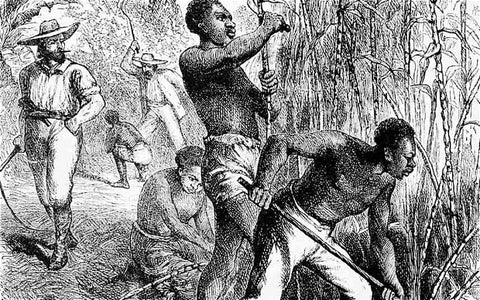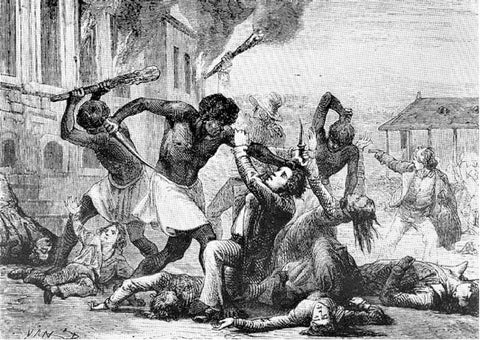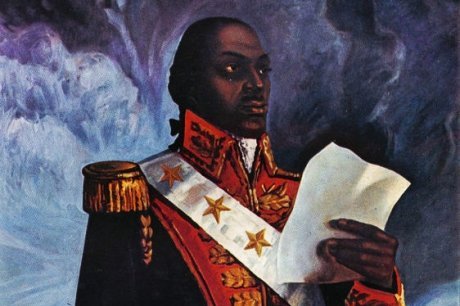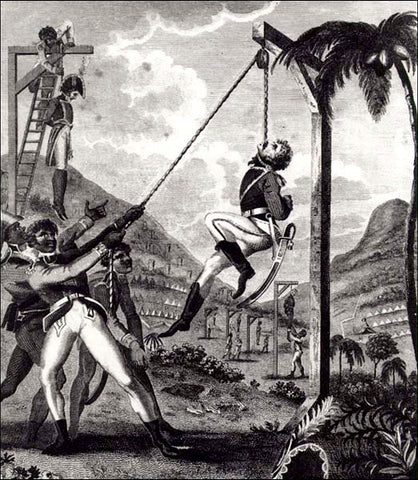How some heroic slaves overthrew a major colonial power
A inhuman island and the crushed lives of African slaves

Haïti (or Saint-Domingue) was a French colony in the Caribbean, and was the world main supplier of sugar. To exploit these resources, the white rulers of the island transferred a lot of African slaves to work in the plantations in the most inhuman conditions possible.
Outnumbered by the slaves, the white masters tried to install a reign of fear to guarantee their safety. Slaves were regularly physically beaten and whipped, some were tortured or even castrated and burned alive.
First signs of an uprising appeared when the slaves who fleed and gathered to fight and raid their old masters (The Maroons, or Neg’Marron in French) united under the Vodou priest François Mackandal, before he was captured by the French in 1758 and burned alive on a stake for opposing the tyranny of the barbaric and heartless rulers. This didn’t stop the maroon movement and they continued to welcome escaped slaves to raid and harass the slavers.
The African slaves mistreatments remained the same until French Revolution in 1789. The main planters of Haïti, the grands blancs, saw an opportunity to take control of the island and gain independence from the French Empire. The slaves knew that it would result in even harsher treatment and exploitation for them, while the slave masters’ crimes would go totally unpunished. After years of mistreatment and atrocities, all the conditions for a major slave uprising were united.
When the fist of justice crushed the sinners

The night of 14 August 1791, the new maroon leader, Vodou Priest Dutty Boukman, gave the signal of the start of the revolt. Within ten days, driven by the righteous revenge of a people who was mistreated for dozen of years, the slaves had taken the whole North of the country and struck the fist of justice on the white rulers. 100 000 slaves fighting for their freedom pillaged and burned the plantations and punished their ex-masters, and by 1792 they controlled a third of the island.
To stop the revolt, France gave civil rights to free men of color of the colony and dispatched 6000 soldiers to pacify Saint-Domingue. Meanwhile, in 1793, the France declared war on the Great-Britain, which was joined by Spain who controlled the other half of the island (Dominican Republic nowadays). While the Spanish forces invaded Saint-Domingue they were joined by the slave forces. Overwhelmed by the opposition, France gave the African slaves their first great victory, by granting them freedom. In 1794, France abolished slavery in their colonies and gave all black men civil and political rights.
Toussaint Louverture, a slave hero

“My brothers and friend. I am Toussaint Louverture; maybe you heard my name before. I undertook my race’s revenge. I want freedom and fraternity to rule in St-Domingue. I work to make them exist. Unite, brothers, and fight with me for the same cause. Help me unroot the tree of slavery”.
François-Dominique Toussaint was born a domestic slave and educated himself thoroughly in the back of his white masters. He was intelligent and charismatic man, driven by his ideals and his goal to get rid of slavery and free his African brothers. He took the leadership of the slave revolt in 1791 and allied to the Spanish forces in 1793 to overthrow the French power. After several brilliant victories, he was nicknamed Louverture (The Opening). While he was working with some French generals to ensure slavery would be abolished, he realized the Spanish had no intentions to stop the exploitation of the African slaves.
In consequence, he moved his soldiers over to the French side to turn the tides of the war. Under his outstanding leadership, the former slaves forces expelled the Great Britain and Spanish army from St-Dominque, and the control was restored to France in appearance. But Toussaint would not give too much power to the colonial power and ruled St-Dominque as autonomous entity. In 1798, he decided to invade the Spanish side of the Island and freed the slaves there in 1801. Then, he issued a constitution to declare St-Domingue a sovereign black and autonomous state.
With the secret intent to restore slavery, France reacted by sending a large expeditionary force to retake full control of the colony. As some of his allied defected to France, Toussaint had no choice but to surrender to France in 1802 in exchange for his freedom. France betrayed him once more, and he died a martyr in jail a few months later, having planted the seed of independence in the heart of the Haïtian former slaves.
The complete overthrow of the oppressing power

After the imprisonment of Toussaint Louverture, it became clear for the people of Saint-Domingue that France wanted to re-establish the slavery they fought and died to erase. In reaction, the black cultivators revolted once again and the French army led a brutal, violent and barbaric campaign. These new atrocities committed by the colonial power helped their former allies to switch side and join the rebel forces.
Led by Jean-Jacques Dessalines, a former slave from Guinea, the rebel cause crushed the French oppressors and defeated them in 1803. On the 1st of January 1804, Dessalines declared the independence of St-Domingue and renamed the nation Haïti, after the indigenous Arawak name as a symbol of end of European Domination and freedom for the black people.
Haïtian slave revolt was the first and only one who led to the independence of a black country. It still remains of a symbol to how oppressed and mistreated black people could take back their dignity and overthrow a powerful regime by the sheer force of will of change. It shall be remembered by all the generations to come as it shows how you can survive inhumane treatment and overcome your condition against impossible odds when driven by the right ideals.
Immortalize and commemorate the deeds of these brave slaves by wearing one of the Haitian Slave Revolt T-Shirts. Be proud of your legacy!



